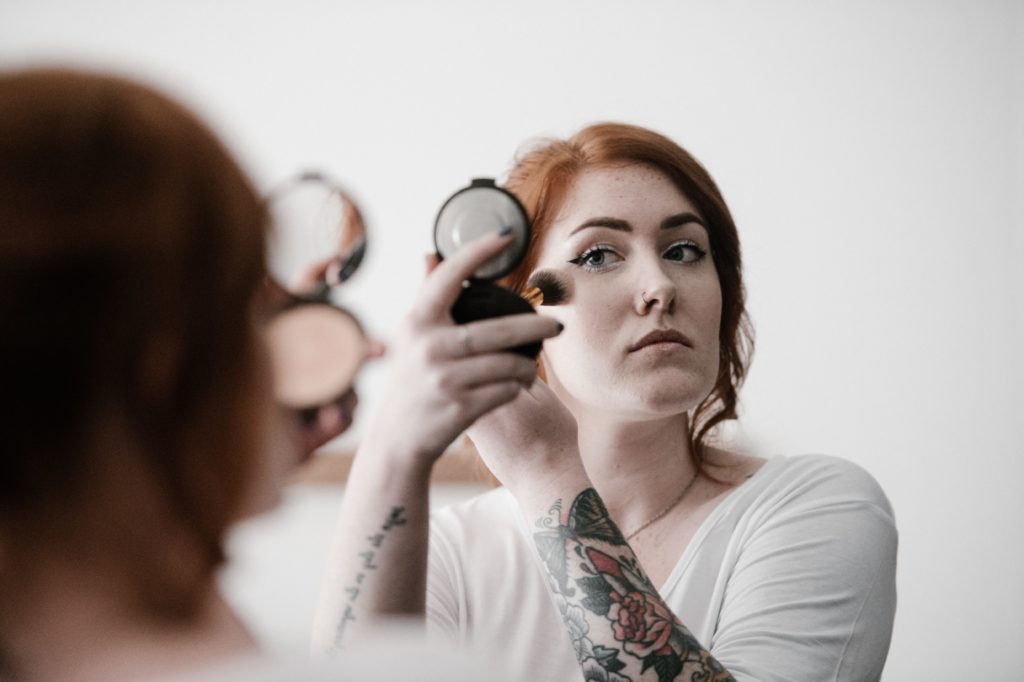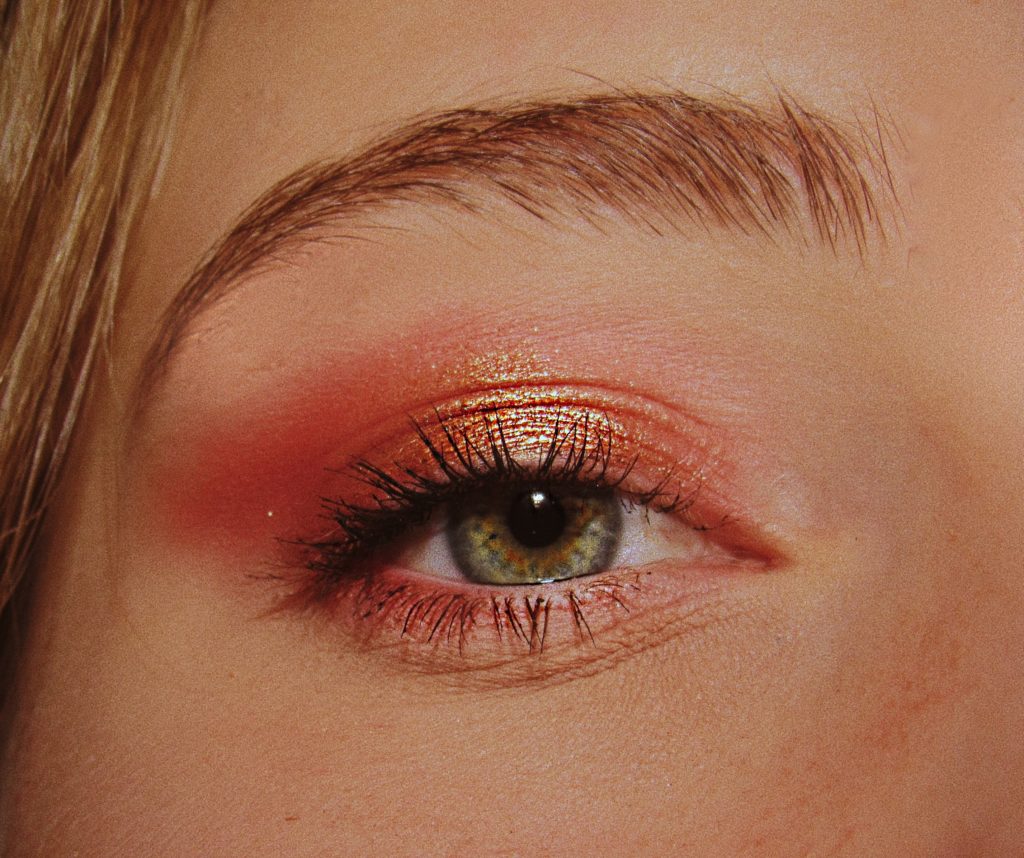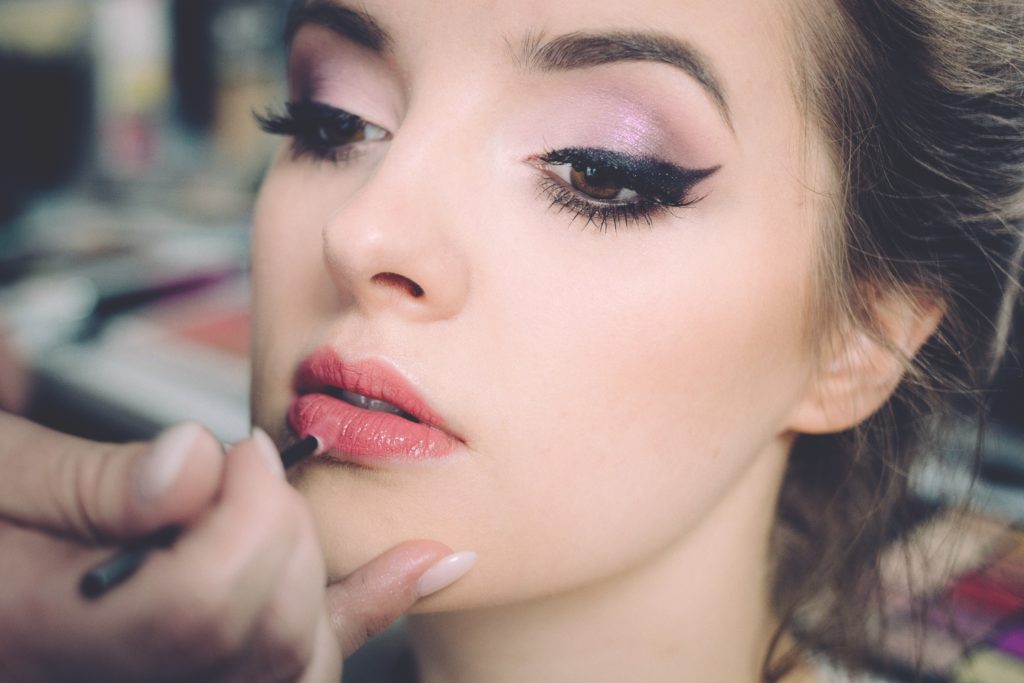Makeup can be an exciting way to express yourself and enhance your natural beauty, but it can also be overwhelming with all the different products, tools, and techniques. If you’re new to the makeup world, it’s easy to feel lost in a sea of the terminology you need help understanding.
Even if you’ve been experimenting with makeup for a while, some terms may be unfamiliar. That’s why having a makeup dictionary with different terminology can be helpful.
In this guide, we’ll cover everything from foundation to exfoliators so you can feel confident and knowledgeable about the makeup world.
Face Makeup Terms

Face makeup refers to the various types of makeup products used to enhance and improve the appearance of the skin on the face. Understanding these terms is crucial for anyone interested in makeup application or seeking to improve their makeup skills. Here is a breakdown of some common face makeup terms:
- Foundation: A foundation is a type of face makeup used to even out skin tone and create a smooth, flawless base for other makeup products. Foundations come in different formulations, including liquid, cream, powder, and stick.
- Concealer: A concealer is a type of face makeup that covers blemishes, dark circles, and other imperfections. Concealers come in different shades and formulations, including liquid, cream, and stick.
- Blush: A blush is a type of face makeup used to add color and warmth to the cheeks. Blushes come in different formulations, including powder, cream, and liquid.
- Contour: Contouring is a makeup technique that uses a darker shade to create the illusion of more defined cheekbones, a slimmer nose, and a more chiseled jawline. Contour products come in different formulations, including powder, cream, and stick.
- Highlighter: A highlighter is a type of face makeup used to add a luminous, radiant glow to the skin. Highlighters come in different formulations, including powder, cream, and liquid.
- Set: The process of using a setting powder or spray to keep the makeup in place and prevent it from smudging or wearing off throughout the day.
Eye Makeup Terms

Eye makeup is essential to any makeup look, and several associated terms may need to be clarified for beginners. Here is an explanation of some of the most common eye makeup terms:
- Eyeshadow: This is a colored powder or cream applied to the eyelids to add color and dimension to the eyes.
- Eyeliner: This pencil, liquid or gel-based product is used to line the eyes. It is used to define the shape of the eyes and make them appear larger.
- Mascara: This product is used to darken, thicken, and lengthen the eyelashes. It is applied with a brush or wand.
- Eyebrow: This refers to the hair above the eyes that frames the face. Eyebrows can be filled in and shaped with various products like pencils, powders, or gels.
- False Eyelashes: These synthetic lashes are applied to the natural lashes to add length and volume.
When it comes to applying eye makeup, there are a few techniques and terms that are commonly used:
- Blending: This is the technique of softly blending two or more colors of eyeshadow together to create a seamless look.
- Stippling: This technique involves using a stippling brush to apply eyeshadow by tapping or dabbing instead of swiping it across the eyelid.
- Winged liner: This is a popular eyeliner style that involves creating a small flick or wing at the outer corner of the eye.
- Smokey eye: This is a dramatic eye makeup look that involves blending darker shades of eyeshadow around the eyelid and into the crease.
Lip Makeup Terms

Lip makeup refers to the different products and techniques used to enhance and beautify the lips. Here are some explanations of the most common lip makeup terms:
- Lipstick: A cosmetic product that is applied to the lips to add color and texture. The lipstick comes in various shades and finishes, including matte, satin, and glossy.
- Lip Gloss: A lip product that adds shine and sheer color to the lips. Lip gloss typically contains a high oil concentration, providing a glossy effect.
- Lip Liner: A pencil-like cosmetic product used to define the shape of the lips and prevent lipstick from bleeding. Lip liner comes in various shades that match the color of the lipstick.
- Lip Balm: A product that moisturizes and protects the lips. The lip balm contains beeswax, shea butter, and vitamin E to keep the lips hydrated and soft.
- Lip Stain: A product that stains the lips with long-lasting color. Lip stain is designed to provide a natural-looking tint to the lips that last for several hours.
When applying lip makeup, it’s important to prep the lips by exfoliating them with a lip scrub and moisturizing them with a lip balm. Then, use a lip liner to define the shape of the lips and fill them in with lipstick or lip gloss. Use a lip stain or apply lipstick with your finger for a more natural look for a diffused effect. Remember to choose lip colors that complement your skin tone and personal style, and have fun experimenting with different shades and finishes!
Tools and Techniques
Makeup tools and techniques are essential to achieving a flawless makeup look. Many different tools and techniques are used in applying makeup, each with its specific purpose. Understanding these terms is essential in achieving a perfect look.
- Brushes: Makeup brushes come in various shapes and sizes, each designed for a specific purpose. For example, a flat foundation brush is used to apply foundation, while an angled brush is used to apply blush and contour.
- Stippling: Stippling is a technique where a brush or sponge is used to apply makeup in small, dot-like motions. This technique is often used to apply foundation or blush, as it provides a natural, airbrushed finish.
- Beauty Blender: A soft, egg-shaped sponge that applies and blends foundation, concealer, and other makeup products.
- Kabuki Brush: A large, dense, and rounded brush used to apply powder, bronzer, and blush.
- Lip Brush: A small, thin brush that applies lipstick or gloss.
- Spoolie Brush: A small, spiral-shaped brush used to comb and shape eyebrows and eyelashes.
- Eyelash Curler: A tool used to curl eyelashes before applying mascara.
- Powder Puff: A soft, circular pad used to apply loose or pressed powder.
- Tweezers: A small tool used to pluck or shape eyebrows.
- Setting Spray: A mist sprayed on the face after makeup application to help it last longer.
- Contour Brush: A brush with a narrow and angled shape used to apply contour powder or cream.
- Fan Brush: A flat and fan-shaped brush used to apply highlighter, blush, or remove excess powder.
- Blending Brush: A fluffy and tapered brush used to blend eyeshadow.
- Flat Brush: A brush with a flat and straight shape used to apply eyeshadow or concealer.
- Winged Eyeliner Brush: A thin and angled brush creates a winged eyeliner look.
- Stippling Brush: A brush with a flat and dense shape used to apply foundation or cream blush.
- Lip Scrub: A product that exfoliates and softens lips before applying lipstick or gloss.
- Beauty Spatula: A small tool scraping products from makeup containers.
- Eye Primer: A product applied to the eyelids before eyeshadow to help it last longer and prevent creasing.
- Smudging Tool: A small and rounded tool used to smudge and soften eyeliner or eyeshadow.
- Lash Glue: A product used to adhere false eyelashes to natural lashes.
- Cat Eye Stencil: A plastic stencil creates a cat-eye eyeliner look.
Makeup Preparation Terms
- Cleanse: The process of removing dirt, makeup, and other impurities from the skin using a cleanser.
- Tone: Using a toner to balance the skin’s pH level after cleansing helps minimize the appearance of pores and improve the skin’s overall texture.
- Moisturize: Apply a moisturizer to the skin to keep it hydrated and prevent dryness.
- Prime: Applying a primer to the skin before applying makeup helps create a smooth, even canvas for the makeup and helps it last longer.
Conclusion
Learning the terminology used in makeup is essential for beginners and seasoned makeup enthusiasts. Understanding the different terms helps you communicate effectively with others about makeup and enhances your ability to create different looks.
By utilizing this makeup dictionary, you can expand your knowledge of the diverse terminology used in makeup, including different makeup products, tools, techniques, and skincare. Always remember that makeup is an art; like any other art form, it requires practice and continuous learning.
Therefore, keep exploring, experimenting, and trying new things to expand your makeup vocabulary and skills. With dedication and practice, you can master the art of makeup and create stunning looks that reflect your unique personality and style.